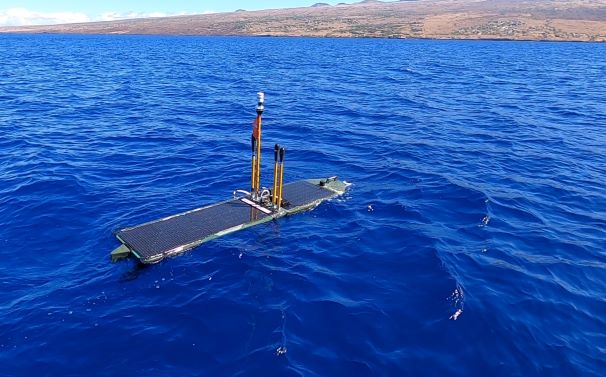
Hawai’I IEA’s Dr. Jamison Gove is a part of a team of researchers from the Pacific Islands Fisheries Science Center autonomous Wave Glider technology to better estimate the future impacts of climate change on Hawaii’s fisheries and coastal marine ecosystems. Unmanned surface vehicles called Wave Gliders are currently circumventing the Hawaiian islands to collect a suite of oceanographic data including temperature, salinity, and chlorophyll at 1.5, 3, and 6 km from shore.
“We are primarily interested in measuring chlorophyll, which provides a good estimate of phytoplankton biomass in the ocean,” said Dr. Jamison Gove, an oceanographer with the Pacific Islands Fisheries Science Center and co-lead scientist on the project. “Phytoplankton are the basis for productive and healthy ecosystems, so knowing where and how much phytoplankton there are in the ocean aids in understanding the entire marine food-web,” added Dr. Gove.
Phytoplankton are microscopic organisms that create energy using photosynthesis, like terrestrial plants. They are an important food for zooplankton, larval fish, and small bait fish, all of which are key food items for larger marine animals like tuna, dolphins, and whales.
This project is a collaborative statewide survey between the Hawai’i Integrated Ecosystem Assessment and the Hawaiian Islands Cetacean and Ecosystem Assessment Survey, a dolphin and whale monitoring program.
